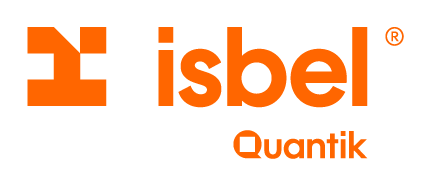In record time, companies and technicians worked to develop a chatbot, an application and the 0800 Coronavirus Plan.

A little over a month ago, on Friday 13 March, the first case of coronavirus was confirmed in Uruguay and the government raised the alarm. That same day, at noon, several public and private companies held their first major meeting to outline a strategy to be followed in the battle against COVID-19 and the misinformation surrounding the disease. Isbel was one of the companies convened to develop products such as the chatbot that works on government and mutual websites, as well as WhatsApp and Facebook Messenger.
Rafael Staricco, executive director of the technology services company, told El País about the start-up and the strategy that was devised to ensure that official, secure and reliable information was quickly available to the public in the digital environment.
"Before that Friday, 13 March, we had already had some conversations about how the technological community could help in the event of a possible arrival of the coronavirus in Uruguay," the specialist said. He added: "That same Friday we were summoned by Antel - which together with Agesic was appointed by the Presidency to coordinate technological cooperation and strategies to be followed - and they asked us if we could take charge of the chatbots".
A chatbot is a programme that simulates having a conversation with a person by providing automatic responses to user input.Staricco explained that the work was divided into two broad categories: one being the publicly visible 0800 1919, the Coronavirus UY application and the chatbots; while the other was the different systems that processed the information.
Working against the clock
More than 150 people had been working against the clock since that Friday. "The deadlines that were being set were very demanding. Coordination with the Ministry of Public Health was very necessary, especially for medical issues," explained the head of Isbel.
Two days later, the action plan was finalised at a meeting between Isbel, Genexus, Antel, Agesic and the Ministry of Public Health (MSP). There, it was established that the channels had two objectives: informative, to satisfy the population's need to know more about the pandemic; and that the tools would gather information to contribute to the possible detection of cases.
"The important thing was for this detection to be systematised and organised by level of certainty and risk. As well as connecting with the different mutuals and ASSE," Staricco said.
From the moment these objectives were agreed upon, intense work began over several days to make the services available to the population and authorities as soon as possible. "It should be noted that a team of technicians who did not know each other started working almost by heart. It was a very good atmosphere of collaboration while we were under a lot of stress due to the pressure that such a situation and a government order implied," the director of Isbel told El País.
"We had limitations on a lot of issues because organisations like WhatsApp review those kinds of permits, but the different agencies made themselves available to speed up processes," Staricco said. The important thing was that we were all rowing for the same side," he said.
The result
The work of all the technology experts resulted in the chatbots, the application and the interface of the Coronavirus Plan. "Something unified and coherent was put together, and the data processing software added information over the days," the specialist emphasised.
On the morning of Tuesday 17 March, the chatbots started answering their first questions. The application was made available to the public on 20 March.
"The chatbots have relieved a lot of people's anxiety. Today, if you call 0800 1919, the person who answers asks you the same questions as the chatbot that is now on 60 websites. You fill in the same form and the same database," he explained.
Data indicate that, at the beginning of April, one million messages were received via chatbots and the Coronavirus Plan application had more than 200,000 downloads.
If you are interested in answering questions, you can call 0800 1919, send a WhatsApp to 098 99 99 99 or download the Coronavirus UY app on Android and iOS.
How does a chatbot work?
What are we talking about when we refer to the famous chatbots? The term comes from chat, chatting, and bot, a short term for a kind of robot or artificial intelligence.
Rafael Staricco indicated that chatbots are virtual assistants that work through messaging services such as WhatsApp or Messenger or through websites.
"It's a little window that you can interact with by writing whatever you want or giving different answers through the conversation. Instead of a person receiving the answers, a virtual system does it", Isbel's director explained to El País.
"What this tool does is communicate through computer programmes with databases or repositories of information where it extracts the queries that the person is making and, in this way, it can provide answers without human intervention such as messaging platforms or a website," he added.
The chatbots of the Coronavirus Plan have two branches, one that is more informative and another that performs the initial triage, which makes queries about the clinical picture, such as whether the person had a fever, was in contact with someone who was infected, etc. As the user responds, the system qualifies him or her, so that if the information is sent because of a possible positive result, it is sorted.
Original article published in El País.



